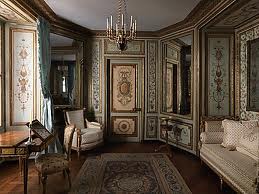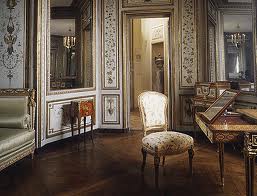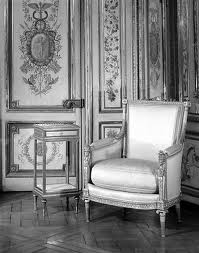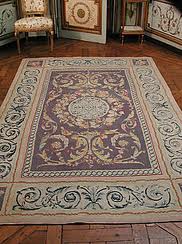Boudoir Period Room, Hotel de Crillon, Metropolitan Museum of Art (1777-80)*
Artist/Designer: Pierre-Adrien Pâris
Project Location: Paris, France




Style/Period(s):
Rococo
Primary Material(s):
Fabric, Wood, Paint
Function(s):
Residential Structure
Related Website(s):
Significant Date(s):
18th Century, 1777
Additional Information:
Project Description:
Currently located in the Wrightsman Galleries, Metropolitan Museum of Art, NY USA
Guest Curator Sarah Mallory's Introduction to Boudoir Study:
Derived from the French word bouder, meaning to be sulky, the boudoir was as much a place for a woman to get dressed and socialize, as it was a prison for feminism. The eighteenth-century French boudoir used interior decoration to both reinforce notions of women as angelic, innocent, luxuriant, voluptuous, and cerebrally scattered and soft as well as provide women a modicum of freedom by allotting a personal space.
In works of literature, such as Emile Zola’s mid-nineteenth-century novel The Kill, a boudoir is a place of intense sexuality, a characterization that acknowledges the typical dressing, undressing, and intimacy of the courtly boudoir. In her article ‘Furniture, Sociability, and the Work of Leisure in Eighteenth-Century France,’ Mimi Hellman asserts that the delicate interiors, especially the furniture and tools of the dressing room, emphasized physical aspects of a woman’s body, the twist of a wrist in opening a drawer calling attention to a woman’s delicate arms. She also notes that men characterized the space as a chamber where women would retreat to pout or tend to their womanly, frivolous thoughts. These were also rooms where married women conducted affairs with their lovers.
The ideas and aesthetics introduced by eighteenth-century French boudoirs endures. The following collection of images briefly outlines both the stereotypically feminine aspects of eighteenth-century French boudoirs while tracing the influence of these rooms in the United States and Europe throughout the nineteenth, twentieth, and twenty-first century.
Publications/Texts in Print:
Kisluk, Danielle O. and Jeffery H. Munger. The Wrightsman Galleries for French Decorative Arts. New York: Metropolitan Museum of Art, 2010.
Peck, Amelia. Period Rooms in the Metropolitan Museum of Art. New York: Metropolitan Museum of Art, 1996.
Building Address:
1000 5th Ave, New York, NY 10028
United States
Tags:
Boudoir, Metropolitan Museum of Art, The Met, New York City, rococo, femininity, period rooms, Pierre-Adrien Paris
Viewers should treat all images as copyrighted and refer to each image's links for copyright information.